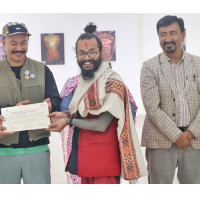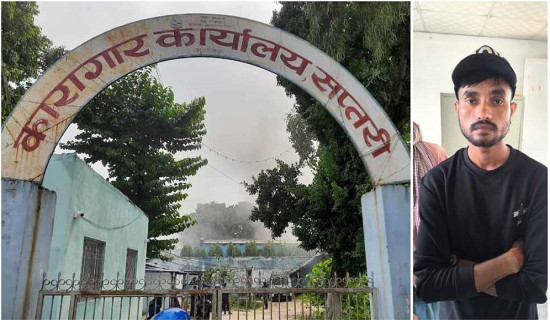- Tuesday, 4 November 2025
Misar: Journey To Land Of Pyramids
'Travelogue' has become a popular literary genre of the present time. It is characterised as a travel essay presentation and is a writing and reading-friendly genre. Here, an attempt has been made to briefly discuss Illya Bhattarai's travelogue collection ‘Misar.’ It is her fifth travelogue book overall. She turned her twelve-day excursion to the pyramid-building region into the travelogue collection titled ‘Misar.’
Egypt, the country of the pyramids and the homeland of Queen Cleopatra, is not the volume's subject, but this collection does reflect its culture, way of life, traditions, natural surroundings, history, and present.
The sixteen titles in this collection describe the journey from its origin to the moment the book was published.
It was possible for the author and her daughter Medha to take a last-minute trip to Egypt and allusions to tickets, visas, and preparations were revealed in the opening essay of this collection, titled "New Destination." The collection's second essay, "Journey to Far Country," opens by stating the date of the journey, which was December 2012.
The trip, broken by a stopover of about sixteen hours at Doha airport, connects to Cairo with the third heading 'Yalla Ylllla'. In this flight, the observer is in a flood of imagination, looking at the earth as far as she can see on the screen in front of her. It looks like the sea or the desert! When the writer sees places where farming is done in the desert, she remembers the barren fields of her own country. The other passengers on the ship are different in dress, language, and activity. Only the words 'Yalla Ylllla' repeated by them can be understood. But the meaning of that is not known.
Anyone who has travelled to Egypt is proud to see the pyramids. The first purpose of writer Bhattarai's trip to Egypt was also to see the pyramids. The fourth article, 'Charming Cairo', is spread half in the sky and half in the land of pyramids. The beautiful description of the Red Sea and the desert seen on the screen in front of her seat on the plane is not missed. The Egyptian historical identity, the pyramid, is seen from the four-star hotel 'Tiwa Pyramid' in Cairo. During the trip to the museum, the visitor gets a lot of information about 'Pharaohs, meaning ancient Egyptian kings. The huge statues of the pharaohs of the ancient twenty-two dynasties of Egypt and many other small statues seem like authentic documents of Egyptian history. In the next article, ' 'Face to Face with History', the Cairo Museum makes it clear that ancient Egyptian kings had a great love for the afterlife.
The title "Hope of life after death" contains some fascinating details, including the fact that the kings and wealthy individuals of ancient Egypt placed a greater value on the afterlife than they did on the present life, spending a lot of money on the creation of mummies and sarcophagus. It reveals more about the longest river in the world, the Nile, and the Pyramids. Another heading, "Tears of Isis," provides information on a well-known Egyptian legend. The Nile floods as the goddess Isis weeps for her deceased husband, Osiris. This antiquated myth linked the story of Isis's tears to the Nile flood. Various titles explain the cruise days, nights, enjoyable activities, excursions to historic temples, the true and false stories about Queen Cleopatra, a journey to Idfu City, the temple of Horus, and God Vaz.
In the title 'Valley of the Kings', there are references to visiting Luxor, as well as to enormous stone sculptures, pharaohs' tombs, and shrouds. Many details about Queen Hotshepsut, who is still regarded as a great and strong pharaoh, and her reign are discovered in this. The 'Amun-Ra Deutako Karnak' discusses a number of Thebs' historic temples.
The title 'On the coastlines of the Red Sea' describes a trip to the Sahara Desert, the Red Sea, and the city of Hurghada, which was built along the Red Sea's coastlines. The specifics of the final day's journey are presented in the title "Last Day in Mishra." The book concludes with the phrase "At the End," which describes the process of producing the Misar travelogue collection as well as the administration of the publishing. The geography, customs, and history of the vacation destination, as well as the prevailing culture, politics, environment, and way of life, are all subtly observed by the author when putting together this collection of travelogues. A significant act of justice on the part of the author towards this genre and its readers can be viewed in the in-depth research of reference materials to establish the truth and the adoption of an aesthetic and compelling writing style.
(Uprety is a poet, travel writer and critic.)
















